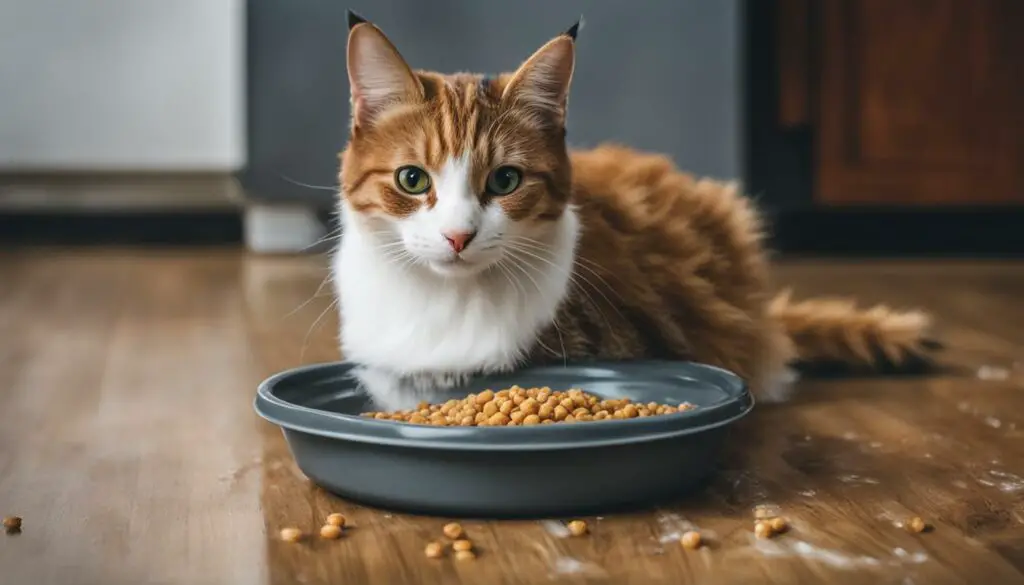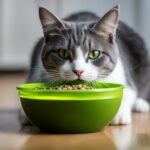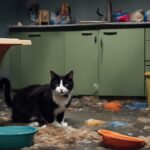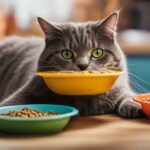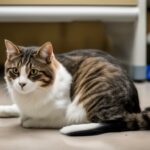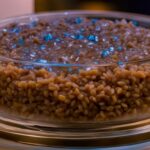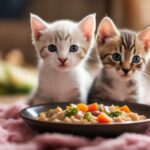Giving your cat a balanced and nutritious diet is crucial for their overall health and well-being. One popular choice among cat owners is wet cat food, which not only helps to keep cats hydrated but also provides necessary nutrients. However, the transition to wet food can sometimes lead to diarrhea in cats, causing discomfort and concern. In this article, I will provide helpful tips and guidance on how to prevent diarrhea when switching your cat to a wet food diet.
Key Takeaways:
- Gradually transition your cat to wet food to avoid digestive issues.
- Monitor your cat’s response to the new diet and make adjustments as necessary.
- Consider potential food allergies or sensitivities and consult a veterinarian if needed.
- Ensure a balanced and nutritious diet for your cat’s overall health.
- Seek veterinary care if diarrhea persists or if your cat shows severe symptoms.
Understanding Wet Cat Food and its Benefits
Wet cat food is a type of cat food that contains a higher percentage of moisture than dry cat food. It is beneficial for cats as it helps to keep them hydrated and supports their overall health. The increased moisture content in wet cat food can help prevent issues such as dehydration, kidney problems, and urinary tract infections.
Hydration for Cat Health
Cat hydration is essential for maintaining their well-being. Unlike humans, cats have a low thirst drive, which can lead to inadequate hydration when solely relying on dry cat food. Wet cat food, with its higher moisture content, helps to ensure that cats receive the necessary fluids to support their bodily functions. Proper hydration is crucial for optimal kidney function, digestion, and overall health.
Dietary Benefits for Cats
Aside from hydration, wet cat food offers other dietary benefits. It is typically formulated to provide a balanced mix of proteins, fats, and carbohydrates, essential for a cat’s nutritional needs. The texture of wet cat food also makes it easier for cats, especially those with dental issues or senior cats, to consume and digest their food. Additionally, wet cat food can aid in weight management by providing a feeling of fullness with fewer calories compared to the same volume of dry food.
Additional Factors to Consider
When choosing wet cat food for your feline companion, it’s important to consider their individual needs and preferences. Some cats may have specific dietary restrictions or allergies that require specialized formulas. Consulting with a veterinarian can help determine the most suitable wet cat food options for your cat’s health and well-being.
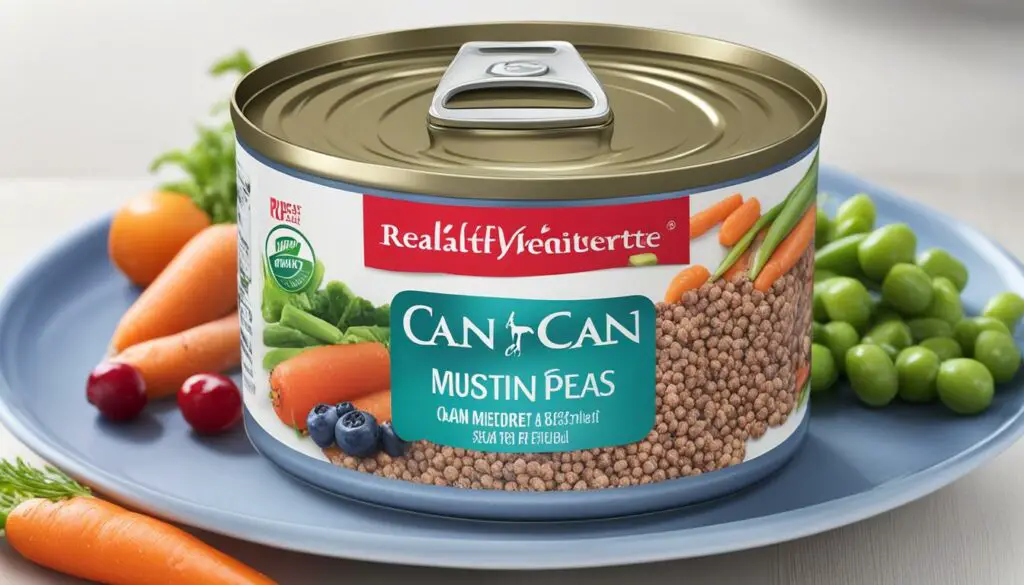
Common Causes of Diarrhea in Cats
Diarrhea in cats can be caused by a variety of factors, including sudden changes in diet, food intolerances, infections, and underlying diseases. When it comes to diet, a sudden switch from one type of food to another can disrupt a cat’s digestive system and lead to diarrhea. Cats may also experience diarrhea due to food intolerances or sensitivities, where certain ingredients in their food trigger an adverse reaction.
Infections can also cause diarrhea in cats. Bacterial, viral, or parasitic infections can affect the gastrointestinal system and lead to loose stools. It’s important to ensure that your cat’s food and water are clean and free from any potential sources of contamination.
Underlying diseases can also contribute to diarrhea in cats. Conditions such as inflammatory bowel disease, pancreatitis, hyperthyroidism, and kidney disease can all affect the gastrointestinal tract and result in digestive issues, including diarrhea. If your cat is experiencing persistent or severe diarrhea, it’s important to consult with a veterinarian to determine the underlying cause and appropriate treatment.
| Cause | Symptoms |
|---|---|
| Sudden diet change | Loose stools, increased bowel movements |
| Food intolerances | Loose stools, vomiting, abdominal discomfort |
| Infections | Loose stools, lethargy, decreased appetite |
| Underlying diseases | Loose stools, weight loss, dehydration |
To prevent diarrhea in cats, it is important to introduce dietary changes gradually. When transitioning to a new food, mix small amounts of the new food with the old food and gradually increase the proportion of the new food over time. This allows the cat’s digestive system to adjust and minimizes the risk of diarrhea. Additionally, it’s crucial to pay attention to your cat’s response to different foods and consult with a veterinarian for guidance on selecting the most suitable diet for your feline companion.
Symptoms of Diarrhea in Cats
Diarrhea in cats can manifest through various symptoms, which can vary in severity. It is important for cat owners to be aware of these symptoms and monitor their feline companions for any signs of diarrhea. Some common symptoms include:
- Loose stools: Diarrhea is characterized by watery or loose stools that may have an unpleasant odor. The consistency of the stool can help identify if a cat is experiencing diarrhea.
- Increased bowel movements: Cats with diarrhea may have frequent trips to the litter box and a higher frequency of bowel movements than usual.
- Vomiting: In some cases, cats with diarrhea may also experience vomiting. This can further contribute to dehydration and discomfort.
- Loss of appetite: Diarrhea can often lead to a loss of appetite in cats. They may show disinterest in their food and have a decreased desire to eat.
It is important to note that these symptoms can vary depending on the severity of the diarrhea and the underlying cause. In more severe cases, blood may be present in the stool, which requires immediate attention from a veterinarian. Cats experiencing persistent or worsening symptoms should also be examined by a vet to identify the cause and receive appropriate treatment.
Table: Symptoms of Diarrhea in Cats
| Symptoms | Characteristics |
|---|---|
| Loose stools | Watery or loose stools with an unpleasant odor |
| Increased bowel movements | Frequent trips to the litter box and a higher frequency of bowel movements |
| Vomiting | Accompanying vomiting, which can contribute to dehydration |
| Loss of appetite | Disinterest in food and decreased desire to eat |
Monitoring these symptoms and seeking veterinary care when necessary is crucial in managing diarrhea in cats and ensuring their overall health and well-being.
Does Wet Cat Food Cause Diarrhea?
When it comes to wet cat food and diarrhea, there are common concerns among cat owners. However, it’s important to note that wet cat food itself does not cause diarrhea in cats. Instead, certain factors related to the quality of the food and the specific dietary needs of individual cats can contribute to digestive issues. By understanding these concerns and taking appropriate measures, it is possible to prevent diarrhea during the transition to wet cat food.
One common concern is the use of low-quality ingredients in some wet cat foods. These ingredients may not provide the necessary nutrients or may be difficult for cats to digest, leading to digestive upset and diarrhea. It’s important to choose high-quality, nutritionally balanced wet cat foods that are formulated to meet the unique nutritional needs of cats.
Another factor to consider is food allergies or sensitivities. Just like humans, cats can have allergies or sensitivities to certain ingredients, such as grains or specific proteins. If a cat has a food allergy or sensitivity, consuming wet cat food that contains these problematic ingredients can lead to diarrhea. It’s important to be aware of any allergies or sensitivities your cat may have and choose wet cat foods that are free from these potential triggers.
By being mindful of the quality of the wet cat food you choose and considering your cat’s specific dietary needs, you can help prevent diarrhea and ensure that your feline friend enjoys a healthy and balanced diet.
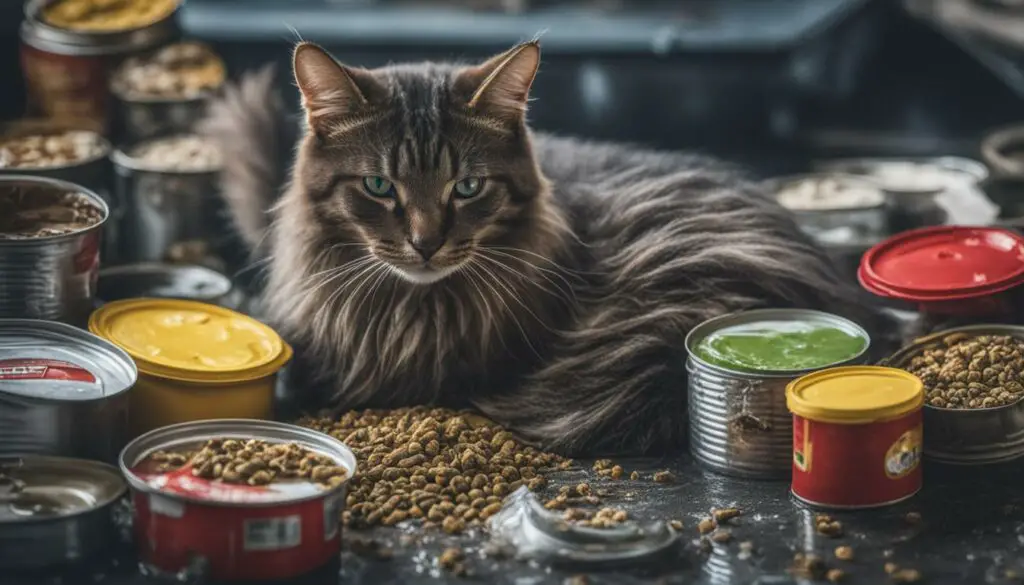
Table: Common Concerns and Solutions
| Concern | Solution |
|---|---|
| Low-quality ingredients | Choose high-quality, nutritionally balanced wet cat foods |
| Food allergies or sensitivities | Select wet cat foods that are free from potential allergens |
| Rapid dietary transition | Gradually introduce wet cat food to the cat’s diet |
| Poor hydration | Ensure the cat has access to fresh water at all times |
Proper Introduction of Wet Cat Food
Introducing wet cat food to your furry friend’s diet requires a gradual transition to ensure a smooth adjustment. By following these steps, you can help prevent any digestive issues, including diarrhea, and ensure a successful switch to wet food.
Mixing with Dry Food
To begin the transition, start by mixing a small amount of wet cat food with your cat’s regular dry food. This will allow your cat to become familiar with the new texture and taste while still maintaining some familiarity with their old food. Gradually increase the proportion of wet food over time, giving your cat’s digestive system ample time to adjust.
Monitoring Your Cat’s Response
During the transition, closely monitor your cat’s response to the new food. Observe their bowel movements, appetite, and overall behavior. If you notice any signs of diarrhea or discomfort, slow down the transition process and consult with your veterinarian for guidance. Each cat is unique, and their tolerance to dietary changes can vary.
Variety and Gradual Changes
To make the transition more appealing to your cat, offer a variety of wet food options. Cats can be selective eaters, so experimenting with different flavors and textures can help encourage them to embrace the new diet. Remember to make changes gradually, allowing your cat’s taste preferences and digestive system to adapt.
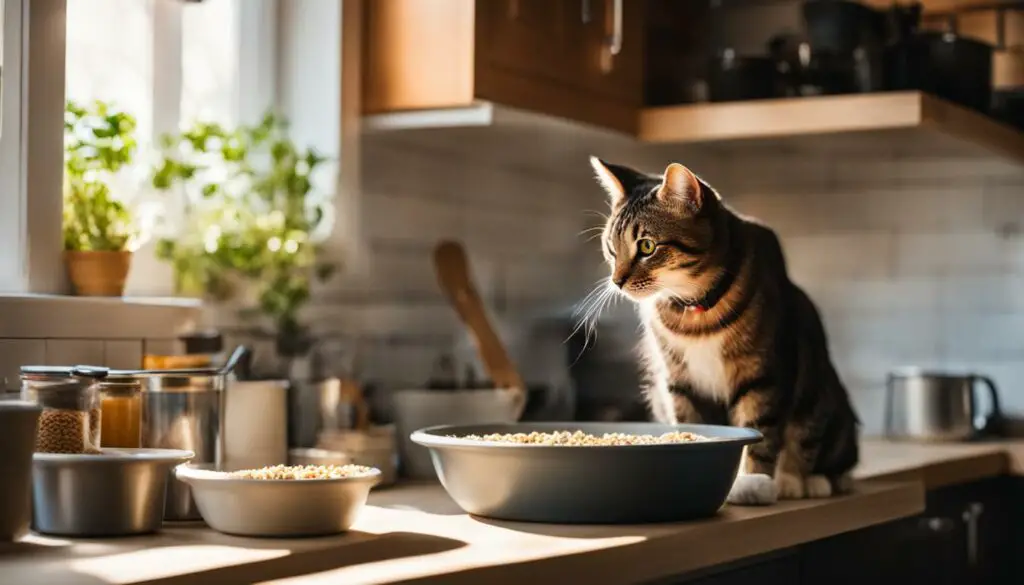
By introducing wet cat food gradually, mixing it with dry food, monitoring your cat’s response, and providing a variety of options, you can help ensure a successful transition. Remember, each cat is unique, so it’s essential to be patient and make adjustments as necessary to find the best diet for your furry friend’s health and happiness.
Understanding Cat Food Allergies and Sensitivities
When it comes to cat food, it’s important to be aware of the possibility of food allergies and sensitivities. Just like humans, cats can develop adverse reactions to certain ingredients in their diet. Identifying and addressing these allergies and sensitivities can help prevent diarrhea and promote your cat’s overall health and well-being.
Common allergenic ingredients in cat food include grains, dairy products, and certain proteins. Cats with food allergies may experience symptoms such as diarrhea, vomiting, itching, or skin irritations. Food sensitivities, on the other hand, can cause gastrointestinal disturbances, including diarrhea.
If you suspect that your cat is experiencing food allergies or sensitivities, it is crucial to consult with a veterinarian. They can conduct tests to identify the specific allergens or recommend a hypoallergenic diet for your cat. It’s important to note that self-diagnosis and elimination diets can be ineffective and potentially harmful to your cat’s health. A veterinary consultation is the best course of action to ensure an accurate diagnosis and appropriate treatment.
Table: Common Allergenic Ingredients in Cat Food
| Allergenic Ingredients | Examples |
|---|---|
| Grains | Corn, wheat, soy |
| Dairy products | Milk, cheese, yogurt |
| Proteins | Chicken, beef, fish |
By working closely with your veterinarian, you can develop a tailored diet plan that meets your cat’s specific dietary needs while avoiding allergenic ingredients. This can help prevent diarrhea and other gastrointestinal issues caused by food allergies or sensitivities. Remember, a balanced and nutritious diet is essential for your cat’s overall health, so don’t hesitate to seek professional advice for your furry friend.
Managing Diarrhea in Cats
When a cat experiences diarrhea, it is important to take prompt action to manage their condition and prevent dehydration and discomfort. Here are some tips for effectively managing diarrhea in cats:
1. Hydration: Diarrhea can cause dehydration, so it is crucial to ensure that your cat stays hydrated. Make sure they have access to fresh water at all times and consider using a water fountain to encourage drinking. If your cat is not drinking enough water, you can try offering them a low-sodium chicken broth to entice them.
2. Bland Diet: A bland diet can help soothe your cat’s digestive system and firm up their stool. Boiled chicken and plain white rice are often recommended as a temporary diet for cats with diarrhea. Feed small, frequent meals of this bland diet until your cat’s stool returns to normal.
3. Probiotics: Adding probiotics to your cat’s diet can help restore the balance of beneficial bacteria in their gut, promoting healthy digestion. Consult with your veterinarian to determine the appropriate probiotic supplement for your cat and follow the recommended dosage.
By following these management strategies, you can help alleviate your cat’s diarrhea and provide them with relief. However, if the diarrhea persists or worsens, or if your cat shows other concerning symptoms, it is essential to seek veterinary care for a proper diagnosis and treatment plan.
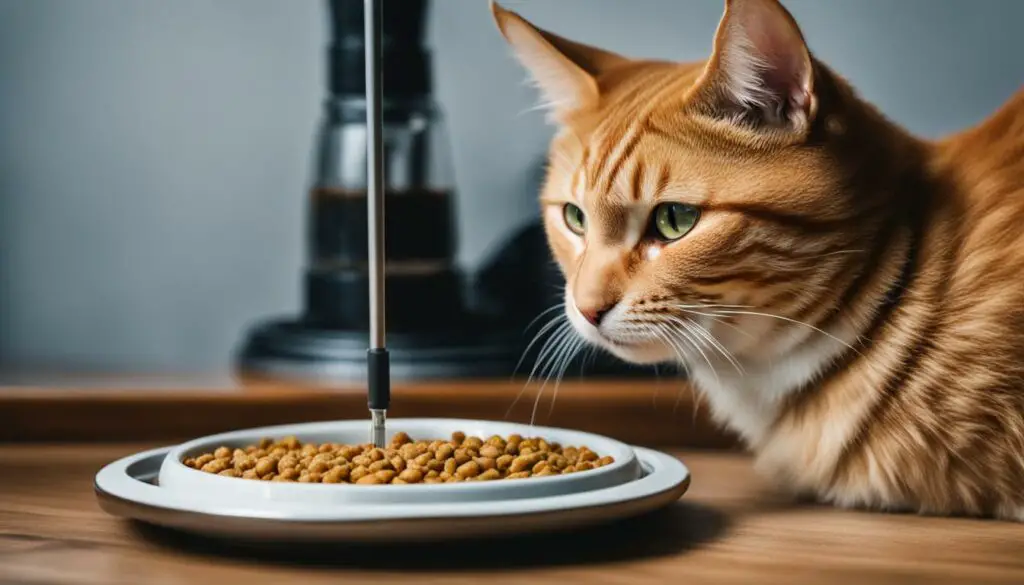
Table: Potential Causes of Diarrhea in Cats
| Cause | Symptoms |
|---|---|
| Sudden Diet Change | Loose stools, increased bowel movements, vomiting, loss of appetite |
| Food Intolerances or Sensitivities | Diarrhea when certain ingredients are consumed, flatulence, stomach discomfort |
| Infections | Diarrhea, fever, lethargy, loss of appetite |
| Diseases | Chronic diarrhea, weight loss, dehydration |
“Proper management of diarrhea in cats involves ensuring hydration, feeding a bland diet, and incorporating probiotics into their diet.”
Veterinary Care for Cat Diarrhea: When to Seek Professional Help
While most cases of diarrhea in cats can be managed at home, there are instances where professional veterinary care is necessary. If your cat experiences prolonged diarrhea, severe symptoms such as blood in the stool or accompanying vomiting, or if your cat has underlying health conditions, it is important to seek professional medical attention.
When diarrhea persists for more than a couple of days, it can lead to dehydration and discomfort for your cat. Veterinary care is essential to diagnose the underlying cause of the diarrhea and provide appropriate treatment. A veterinarian will thoroughly examine your cat, ask about their medical history, and may request a stool sample for further analysis.
Underlying health conditions such as gastrointestinal diseases, infections, or allergies may require specific medications or treatments. Your veterinarian will prescribe the appropriate course of action to address these conditions and alleviate your cat’s diarrhea.
When to Seek Veterinary Care for Cat Diarrhea:
- Prolonged diarrhea lasting more than a couple of days
- Severe symptoms such as blood in the stool or accompanying vomiting
- Presence of underlying health conditions
Remember, timely veterinary care is crucial in ensuring the well-being and health of your cat. If you notice any concerning symptoms or have any doubts about your cat’s condition, it is always best to consult with a veterinarian.
| Severity of Symptoms | Possible Cause | Treatment |
|---|---|---|
| Mild to moderate diarrhea | Dietary changes, food sensitivities, or mild infections | Home care, bland diet, and probiotics |
| Severe diarrhea with blood or mucus | Gastrointestinal diseases, bacterial or viral infections | Medical examination, stool sample analysis, and prescribed medication |
| Chronic diarrhea | Underlying health conditions such as inflammatory bowel disease or intestinal parasites | Comprehensive diagnostic tests and tailored treatment plan |
The Benefits of a Balanced Cat Diet
A balanced cat diet is essential for the optimal health and well-being of our feline friends. It provides the necessary nutrients that cats need to thrive and maintain a healthy lifestyle. A balanced diet ensures that cats receive the right amounts of proteins, fats, carbohydrates, vitamins, and minerals to support their overall health. By meeting their nutritional needs, we can help prevent various health issues and promote longevity in cats.
One of the key benefits of a balanced cat diet is the promotion of optimal digestive health. When cats consume a balanced diet, their digestive system functions efficiently, which helps to prevent digestive disorders like diarrhea. By providing the right balance of nutrients, a balanced diet supports the growth and maintenance of healthy gut bacteria, ensuring proper digestion and nutrient absorption.
Moreover, a balanced cat diet contributes to overall well-being by boosting the immune system, maintaining a healthy weight, and supporting healthy organ function. The essential nutrients in a balanced diet play vital roles in various bodily functions, from providing energy to supporting strong bones and teeth. By providing these nutrients in the proper proportions, a balanced cat diet helps to prevent deficiencies and reduce the risk of chronic health conditions.
| Nutrient | Role | Sources |
|---|---|---|
| Proteins | Aids in muscle development and repair | Meat, fish, poultry, eggs |
| Fats | Provides energy and supports healthy skin and coat | Fish oil, chicken fat, flaxseed |
| Carbohydrates | Offers a source of energy | Whole grains, fruits, vegetables |
| Vitamins | Supports various bodily functions | Fruits, vegetables, supplements |
| Minerals | Aids in bone health and other bodily functions | Meat, dairy, grains, supplements |
In conclusion, providing a balanced diet for our cats is vital for their overall health and well-being. By ensuring they receive the essential nutrients they need, we can prevent digestive issues like diarrhea, boost their immune system, and support healthy organ function. A balanced cat diet sets the foundation for optimal health and helps our feline companions thrive throughout their lives.
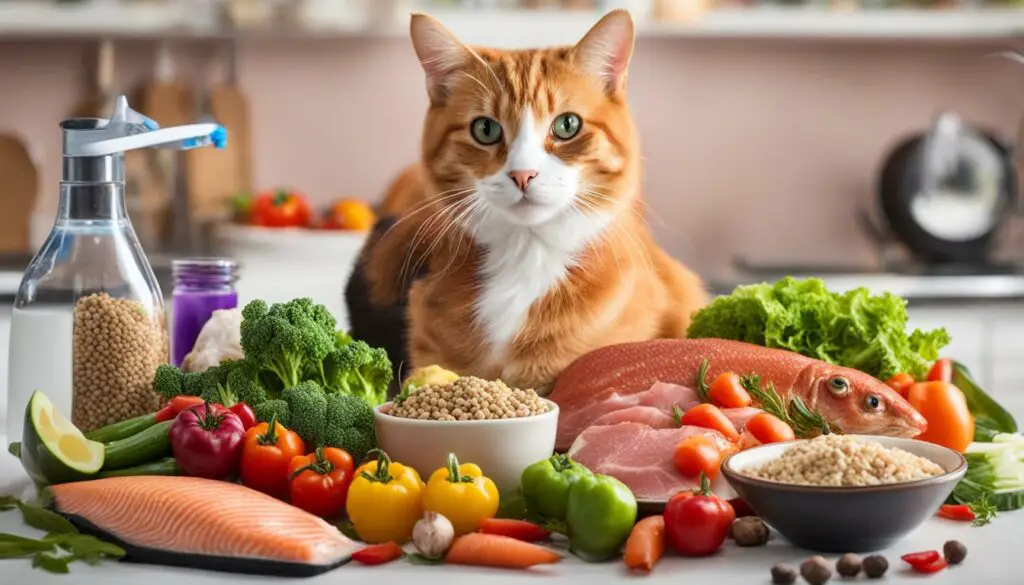
Addressing Specific Dietary Needs and Considerations
When it comes to the dietary needs of cats, it’s important to consider various factors such as age, health conditions, and individual requirements. Cats have unique nutritional needs that should be met through a tailored diet plan. By understanding these specific needs, cat owners can ensure their feline companions receive the right nutrients for optimal health.
Tailored Diet Plans: Cats have different dietary requirements at different stages of their lives. Kittens, for example, need a diet that supports their growth and development, while senior cats may require food that supports joint health and weight management. Consulting with a veterinarian or pet nutritionist can help create a tailored diet plan that addresses these specific needs.
Age-Related Considerations: As cats age, their dietary needs change. Senior cats may require diets that are lower in calories and higher in nutrients to accommodate their slower metabolism and potential health issues. Additionally, cats with specific health conditions, such as diabetes or kidney disease, may need a specialized diet to manage their conditions effectively.
Health Conditions: Cats with certain health conditions may require specific dietary modifications. For example, cats with food allergies or sensitivities may need a diet that eliminates common allergenic ingredients such as grains or certain proteins. Cats with urinary tract issues may benefit from a diet that promotes urinary health. It’s important to work with a veterinarian to identify any underlying health conditions and determine the most appropriate diet for a cat’s specific needs.
Table: Dietary Considerations for Cats
| Dietary Needs | Considerations |
|---|---|
| Age | Kittens, adults, seniors |
| Health Conditions | Food allergies, sensitivities, diabetes, kidney disease, urinary tract issues |
| Weight Management | Obesity, underweight |
| Specialized Diets | Raw diets, prescription diets |
By addressing the specific dietary needs and considerations of cats, cat owners can provide the nutrition necessary for optimal health. Consulting with a veterinarian or pet nutritionist is crucial in developing a tailored diet plan that ensures cats receive the right nutrients at every stage of their lives.
Importance of Regular Veterinary Check-ups
Regular veterinary check-ups play a crucial role in maintaining the overall health and well-being of our beloved feline companions. These check-ups are essential for cat health monitoring and preventive care, helping to detect and address any potential health issues before they escalate. As a responsible cat owner, I understand the significance of scheduling regular visits to the veterinarian to ensure the optimal health of my cat.
During veterinary check-ups, the veterinarian conducts a comprehensive examination of the cat, assessing vital signs, body condition, and overall physical health. These examinations may include observing the cat’s behavior, listening to the heart and lungs, checking teeth and gums, and examining the eyes, ears, and skin. By closely monitoring the cat’s health through regular check-ups, potential problems can be identified and treated early, preventing further complications.
Veterinary check-ups also provide an opportunity to discuss and address any concerns or questions regarding my cat’s diet and nutrition. The veterinarian can offer guidance on cat nutrition, including recommending specific dietary options based on the cat’s age, health condition, and individual requirements. This personalized advice ensures that my cat receives a balanced diet, essential nutrients, and optimal nourishment.
Furthermore, regular veterinary check-ups allow for the administration of preventive care measures such as vaccinations, parasite control, and dental care. Vaccinations protect cats from various infectious diseases, while parasite control prevents infestations and safeguards the overall health of the cat. Dental care, including professional cleanings and dental examinations, helps maintain oral hygiene and prevents oral health issues.
By prioritizing regular veterinary check-ups, I can actively monitor and maintain the health of my cat, ensuring early detection of any potential health concerns and implementing preventive care measures. This proactive approach contributes to the longevity, happiness, and well-being of my feline friend.
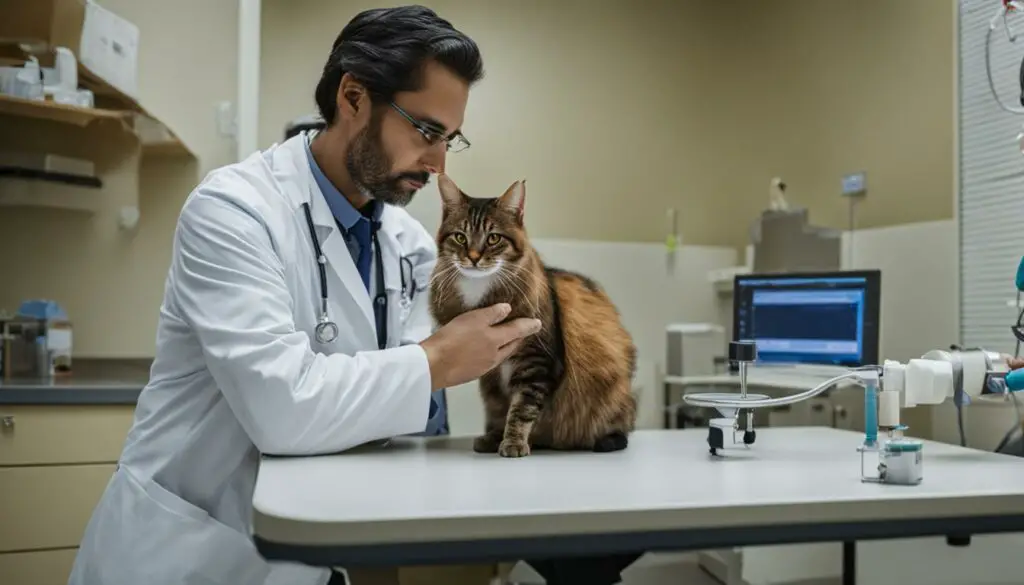
Table 12.1: Recommended Frequency of Veterinary Check-ups for Cats
| Age | Veterinary Check-up Frequency |
|---|---|
| Kittens (up to 1 year) | Every 3-4 weeks |
| Adult Cats (1-7 years) | Yearly |
| Senior Cats (7+ years) | Every 6 months |
Table 12.1 illustrates the recommended frequency of veterinary check-ups for cats based on their age. Kittens require more frequent visits to ensure proper growth and development, while adult cats may visit their veterinarian annually. Senior cats, who may be more prone to age-related health issues, benefit from more frequent monitoring, with visits every six months.
Additional Tips for a Smooth Transition to Wet Cat Food
Transitioning a cat to wet food can be a positive change for their overall health and well-being. To ensure a smooth transition, consider the following tips:
- Make gradual changes: Cats may be resistant to sudden changes in their diet, so it’s important to introduce wet food slowly. Start by mixing a small amount of wet food with their current dry food and gradually increase the proportion of wet food over time. This helps their digestive system adjust to the new diet and reduces the chances of diarrhea.
- Provide a variety of wet food options: Cats can have different preferences when it comes to wet food flavors and textures. Offering a variety of options can help cater to their individual tastes and make the transition more enjoyable. It’s also a good opportunity to provide a balanced diet by offering different protein sources.
- Monitor their response: During the transition, keep an eye on your cat’s response to the new food. Look for any signs of gastrointestinal upset such as loose stools or vomiting. If any issues arise, consult with a veterinarian for guidance on adjusting the diet or addressing any underlying food sensitivities.
Remember, every cat is unique, and what works for one may not work for another. It’s important to be patient and flexible during the transition period. Monitor your cat’s health and well-being, and consult with a veterinarian for personalized recommendations.
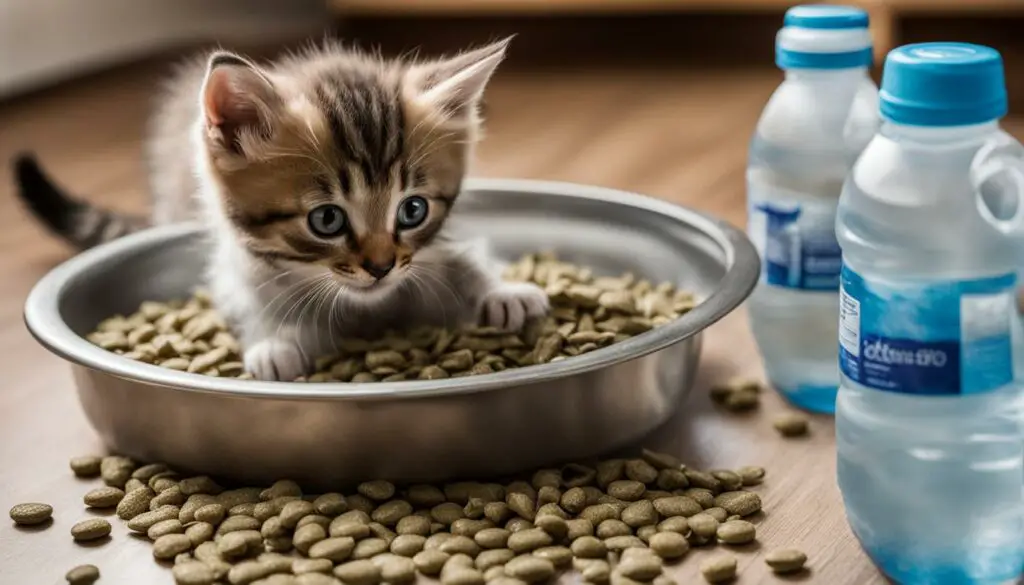
Frequently Asked Questions
- How long should the transition to wet cat food take?
- Can I mix wet and dry cat food?
- What if my cat refuses to eat wet food?
The transition period can vary depending on the individual cat. It’s recommended to make the change over the course of 7-10 days to allow for a gradual adjustment.
Yes, mixing wet and dry cat food can be a good way to provide variety and meet your cat’s hydration needs. Just make sure to monitor their response and adjust the proportions of each food accordingly.
Some cats may be resistant to wet food initially. Try different flavors and textures, and consider warming the food slightly to enhance its aroma. If your cat still refuses to eat wet food, consult with a veterinarian for alternative options.
The Role of Probiotics and Fiber in Cat Digestion
When it comes to ensuring optimal digestion and gut health in cats, two key components play a significant role: probiotics and fiber. Probiotics are beneficial bacteria that help maintain a healthy balance of gut flora, while fiber contributes to regular bowel movements and supports the digestive process. Incorporating these elements into a cat’s diet can promote overall digestive health and reduce the risk of diarrhea.
Probiotics: Probiotics are live microorganisms that provide various health benefits when consumed in adequate amounts. These beneficial bacteria help improve digestion by breaking down food and absorbing nutrients more effectively. Probiotics also support the immune system and can help alleviate gastrointestinal issues such as diarrhea, bloating, and gas. To introduce probiotics to your cat’s diet, you can choose from specially formulated probiotic supplements or opt for cat food that contains probiotic strains.
Fiber: Fiber is a type of carbohydrate that plays a crucial role in maintaining regular bowel movements and promoting digestive health. It adds bulk to the stool, making it easier to pass and reducing the risk of constipation or loose stools. Fiber also acts as a prebiotic, providing nourishment for the beneficial bacteria in the gut. Sources of fiber for cats include fruits, vegetables, and grains. However, it is important to introduce fiber gradually to avoid gastrointestinal upset. Consult with your veterinarian to determine the appropriate amount and sources of fiber for your cat’s diet.
By including probiotics and fiber in your cat’s diet, you can support a healthy digestive system and reduce the risk of diarrhea. However, it is important to note that every cat is unique, and dietary adjustments should be made under the guidance of a veterinarian. Regular veterinary check-ups and consultations can help ensure that your cat’s specific dietary needs are met and that they maintain optimal digestive health.
Conclusion
In conclusion, when switching your cat to wet food, it is important to take preventive measures to avoid diarrhea. By following some simple tips and considering your cat’s health and dietary needs, you can ensure a smooth transition and maintain their overall well-being.
First and foremost, make the transition gradually. Start by mixing small amounts of wet food with their regular dry food and gradually increase the proportion of wet food over time. This allows their digestive system to adjust and minimizes the chances of diarrhea.
Additionally, always keep an eye out for any signs of food allergies or sensitivities. If your cat experiences diarrhea or other symptoms after consuming certain ingredients, consult with a veterinarian for proper diagnosis and guidance on suitable cat food options.
Lastly, providing a balanced diet for your cat is essential. Ensure they receive all the necessary nutrients, such as proteins, fats, carbohydrates, vitamins, and minerals. A well-balanced diet supports a healthy digestive system and reduces the risk of diarrhea and other gastrointestinal issues.
By following these prevention tips and maintaining a balanced diet, you can help your cat make a successful transition to wet food without any digestive issues. Remember, always consult with a veterinarian for personalized guidance and recommendations specific to your cat’s needs and health.
FAQ
Can switching a cat to wet food cause diarrhea?
Switching a cat to wet food can potentially cause diarrhea, especially if the transition is done too quickly. It is important to introduce wet food gradually to allow the cat’s digestive system to adjust.
What are the common causes of diarrhea in cats?
Diarrhea in cats can be caused by various factors, including sudden changes in diet, food intolerances or sensitivities, infections, and underlying diseases. It is important to monitor the cat’s symptoms and seek veterinary care if necessary.
What are the symptoms of diarrhea in cats?
Symptoms of diarrhea in cats include loose stools, increased frequency of bowel movements, vomiting, loss of appetite, and in severe cases, blood in the stool. It is important to keep an eye out for these symptoms and seek veterinary attention if they persist or worsen.
Does wet cat food cause diarrhea?
Wet cat food itself does not cause diarrhea in cats. However, there are common concerns about the quality of ingredients in wet food and the possibility of food allergies or sensitivities. It is important to consider these factors when introducing wet cat food to a cat’s diet.
How should I introduce wet cat food to prevent diarrhea?
It is essential to introduce wet cat food gradually. Start by mixing small amounts of wet food with the cat’s regular dry food and gradually increase the proportion of wet food over time. This allows the cat’s digestive system to adjust and reduces the chances of diarrhea. Monitor the cat’s response and make adjustments as necessary.
Can food allergies or sensitivities cause diarrhea in cats?
Yes, some cats may have food allergies or sensitivities that can cause diarrhea when certain ingredients are consumed. Common allergenic ingredients include grains, dairy products, and certain proteins. If food allergies or sensitivities are suspected, it is important to consult with a veterinarian for proper diagnosis and guidance.
How can I manage diarrhea in my cat?
To manage diarrhea in cats, it is important to provide ample hydration through water and offer a bland diet such as boiled chicken and rice. Additionally, incorporating probiotics into the cat’s diet can help restore the balance of gut bacteria and promote healthy digestion.
When should I seek veterinary care for cat diarrhea?
Prolonged diarrhea, severe symptoms such as blood in the stool or accompanying vomiting, and the presence of underlying health conditions warrant professional medical attention. It is best to consult with a veterinarian for proper diagnosis and treatment.
What is the importance of a balanced cat diet?
A balanced cat diet is crucial for maintaining the overall health and well-being of cats. It should contain essential nutrients such as proteins, fats, carbohydrates, vitamins, and minerals. Providing a balanced diet helps support a healthy digestive system and reduces the risk of diarrhea and other gastrointestinal issues.
How can I address the specific dietary needs of my cat?
Cats have specific dietary needs that may vary based on factors such as age, health conditions, and individual requirements. It is important to consider these factors and consult with a veterinarian or pet nutritionist to develop a tailored diet plan that addresses the specific dietary needs and considerations of your cat.
Why are regular veterinary check-ups important?
Regular veterinary check-ups are essential for monitoring the overall health of cats and addressing any potential health issues. During these check-ups, a veterinarian can provide guidance on cat nutrition, offer preventive care measures, and address any concerns or questions regarding your cat’s diet.
What are some additional tips for transitioning to wet cat food?
To make a smooth transition to wet cat food, it is recommended to make gradual changes, offer a variety of wet food options to cater to the cat’s preferences, and maintain a consistent feeding schedule. Incorporating interactive feeding methods can also help make the transition enjoyable for your cat.
What is the role of probiotics and fiber in cat digestion?
Probiotics can help maintain a healthy balance of gut bacteria in cats, while fiber promotes regular bowel movements and aids in the digestion process. Including probiotics and fiber in a cat’s diet can contribute to optimal digestive health and reduce the risk of diarrhea.

